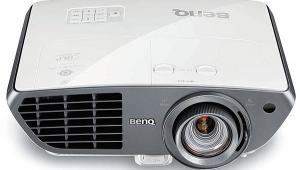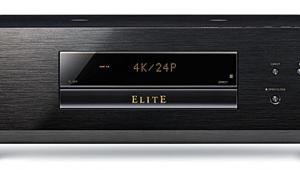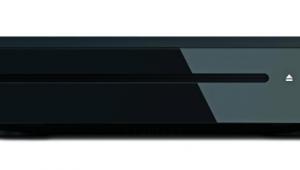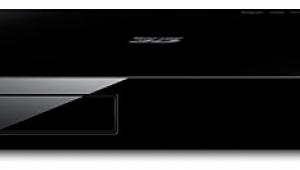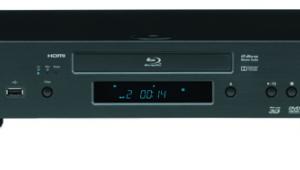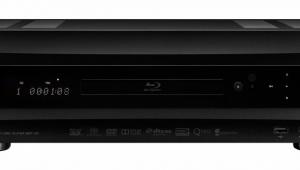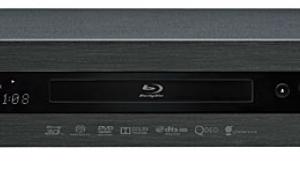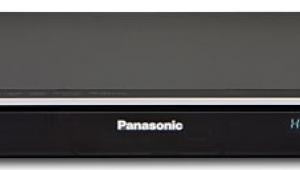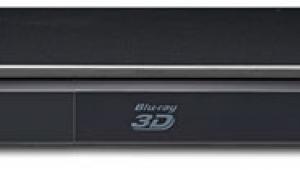iCapable! Quite clever!
Pioneer Elite BDP-52FD Blu-ray 3D Player

Pioneer’s involvement in optical-disc technology started with the development of Laserdisc late in the 20th century, and the company has continued the tradition with CD, DVD, and Blu-ray. Surprisingly, despite the company’s background and solid history of new product development, it hasn’t been at the forefront of Blu-ray player innovation. The last player I reviewed from Pioneer was in 2009 (the BDP320). It offered fantastic audio and video, but its load times were poisonously slow and it offered no add-on features like streaming or DVD-Audio and SACD support.
Time has a way of healing all wounds, though, and Pioneer has thankfully gone back to the drawing board with its latest Elite-branded Blu-ray players. At CEDIA 2011 in September, the company announced two new players: the flagship BDP-53FD, a $500 model that offers the respected Marvel Qdeo chipset found in Pioneer’s upper-end receivers; and a $400 step-down model that’s the subject of this review, the BDP-52FD.
Anything with the Elite moniker on its face is expected to look the part, and the BDP-52FD doesn’t disappoint. The aesthetically pleasing aluminum front panel sports a center-mounted disc tray and only the most-used controls—power, eject, play, and stop. Rounding things out is one of two USB inputs and an easyto-read, dimmable display.

The sparse rear panel includes a lone HDMI 1.4 port, a composite video output, optical digital and stereo analog audio outputs, an Ethernet jack, the second USB input, an RS-232 port, and a detachable power cord. The BDP-52FD lacks the familiar red, green, and blue RCA jacks for component video, which reflects the industry mandate to phase out high-definition analog video outputs for players introduced after July 2011. If you still need these or multichannel analog audio outs, you’ll need to search elsewhere or finally bite the bullet and upgrade your AVR for HDMI compatibility. If you can’t make a wired Ethernet connection to the player, you can purchase a Wi-Fi dongle (model AS-W300) at a surprisingly steep $149 premium.
The player is BD-Live compliant, but you must add your own 1 gigabyte of USB memory to one of the two USB ports in order to torture yourself with the usual half-baked online featurettes and trailers. (I often recommend turning this feature off to streamline disc load times.) As is common with most other players now, the BDP-52FD decodes Dolby TrueHD and DTS-HD Master Audio on board and outputs them as PCM over HDMI for AVRs that can handle multichannel PCM. If your AVR or processor features onboard decoding, the Elite can send the raw bitstreams, but without the secondary audio associated with PIP extras or the clicks and beeps in Blu-ray Disc menus.
Pioneer includes its exclusive Precision Quartz Lock System (PQLS). This works in conjunction with compatible Pioneer A/V receivers for higher-quality CD playback by reducing jitter that can occur with the transmission of digital audio bits. Other features include: Blu-ray 3D, SACD, DVD-Audio, x.v. Color and Deep Color (not supported by Blu-ray or DVD); online streaming content from Netflix, YouTube, and Pandora (Internet connection required); DivX certification, and a Home Media interface to stream audio, video, and pictures from a DLNA-compatible media server.
User Interaction
Out of the box, the Elite feels a little on the dainty side at less than 6 pounds, but without a robust analog section, there’s no need for a heavy power supply. The non-backlit remote contains all of the useful buttons, but they’re impossible to find in a darkened room. These include direct access to Netflix, the Home Media Gallery, and the ability to change the HDMI resolution on the fly. Responsiveness is somewhat sluggish, and I had to point the remote directly at the unit for the commands to be received.
The setup menu is easy to navigate. On the first power-up, a setup navigator walks you through the basics of language settings, video output, audio output, and aspect ratio. You can easily accomplish any additional changes by entering the wellorganized setup menu.
The BDP-52FD offers a variety of HDMI color space options, including auto, Y/Pb/Pr (4:4:4), Y/Pb/Pr (4:2:2), and two RGB outputs. Video output resolutions over HDMI include 480i/p, 576i/p, 720p, 1080i, and 1080p (24 and 60 fps). There’s no source direct mode, which would output the signals as encoded on the disc with no video processing applied. This would be a great option for users with outboard scalers. The auto setting uses your display’s EDID (extended display identification) information and outputs the highest supported resolution.
- Log in or register to post comments

